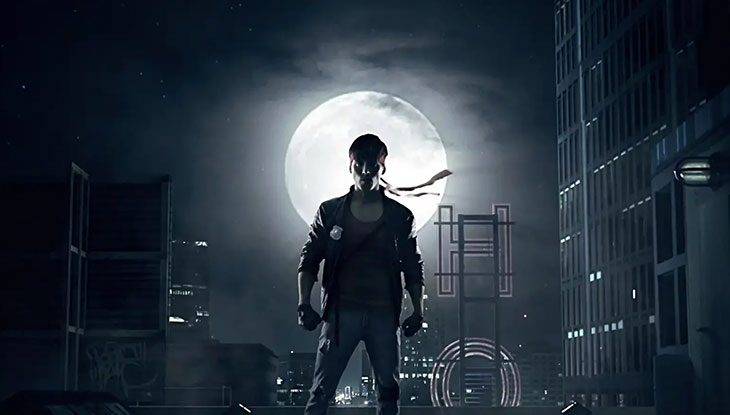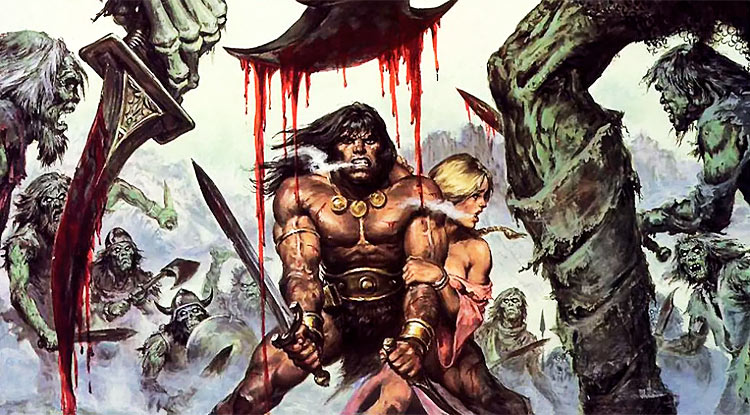Part 2: The Comic Book Conan
It’s extremely rare for a single character to be on the receiving end of two definitive interpretations. While Robert E. Howard’s prose clearly defined Conan’s personality and world in the early going, the character experienced a bit of a free for all in the decades following the author’s unfortunate suicide. Without a guiding hand available to keep the barbarian along a clearly defined path, it was up to several other authors, such as L. Sprague de Camp, Poul Anderson, and a dozen more of their peers to continue to churn out Conan adventures. There’s a saying concerning too many cooks in the kitchen, and it applies here. With each new author bringing his own vision of what Conan’s latest should read like, the character’s original essence soon became diluted. Eventually, the rights holders even allowed Howard’s stories to go out of print. While Conan was never unpopular, the time was still ripe for someone to bring him back to the forefront of fantasy fiction.
In 1970, Marvel Comics was better known for superheroes than barbarians. A creation like Conan was an odd fit among such characters as Spider-Man, Iron Man, The Avengers, and all of their heroic contemporaries. It was up to writer Roy Thomas, considered by many to be Conan’s second father, to return Howard’s hero to greatness. And for the first 115 issues of Marvel’s Conan The Barbarian series, an epic run even by today’s standards, he did just that.
 Thomas’ prose was more lyrical and verbose than comic book readers were used to. While modern comics can easily be read in under five minutes, getting through an issue of Thomas’ Conan was a time-consuming endeavor, but a rewarding one. At first adapting Howard’s original stories, and then those of other unrelated fantasy authors, Thomas had the novel idea of having Conan age roughly one year for every year of publication, constantly moving him forward. Subsequent writers abandoned this conceit, in order to keep the popular series going, but for 115 issues Thomas had the comic book Conan on a mostly similar path to his literary counterpart, with the looming shadow of Aquilonia ever present in the barbarian’s future.
Thomas’ prose was more lyrical and verbose than comic book readers were used to. While modern comics can easily be read in under five minutes, getting through an issue of Thomas’ Conan was a time-consuming endeavor, but a rewarding one. At first adapting Howard’s original stories, and then those of other unrelated fantasy authors, Thomas had the novel idea of having Conan age roughly one year for every year of publication, constantly moving him forward. Subsequent writers abandoned this conceit, in order to keep the popular series going, but for 115 issues Thomas had the comic book Conan on a mostly similar path to his literary counterpart, with the looming shadow of Aquilonia ever present in the barbarian’s future.
At one point becoming Marvel’s top-selling book, Conan The Barbarian soon spawned several spin-offs, chief among them the legendary black-and-white magazine The Savage Sword Of Conan, fondly remembered by comic book fans and lovers of mature fiction alike. Thomas steered Savage Sword for several years, filling it with the ample nudity and gore he never could have gotten away with in a monthly comic struggling under the weight of The Comics Code Authority.
Though beloved artist Barry Windsor Smith was the first to bring life to Conan’s comic book adventures, its John Buscema’s iconic depiction that is forefront in the mind of fans. The black mane of hair, the sullen eyes, the loincloth and bulging muscles, a broadsword ever at the ready. These descriptors were first forged by Howard, but it was Buscema who truly burned them into the general populace’s consciousness.
Even after Thomas’ departure, Conan The Barbarian lasted all the way to 1993, totaling 275 issues and 12 annuals. Savage Sword lasted even longer, ending in 1995 after 235 issues. Both series gave several generations of Conan fans stories to cherish and the multitude of artists that worked alongside Thomas and other authors gave the world an indelible tapestry of barbaric goodness.
Dark Horse Comics currently holds the reins of the franchise, but their releases are mostly treading on ground already well traveled by Roy Thomas and company.
Worthwhile comic book reading:
Queen Of The Black Coast is another Robert E. Howard classic. Featuring the single true love of Conan’s life, the pirate queen Bêlit; it’s a tale of love gained and lost just as quickly. In adapting this work, Roy Thomas took what was a quick but powerful relationship in the original story and extended it for over 50 issues in the comic, letting readers grow accustomed to Bêlit’s presence, lulling fans into a false sense of security before finally, or perhaps inevitably, having the Shemitish pirate meet her fate. Bêlit’s tale runs through issues 58 to 100 of Conan The Barbarian. Trivia hounds will be interested to learn that Valeria, the love interest from the first Conan movie, is actually based in large part on Bêlit, even her promise to return from the afterlife to fight at Conan’s side is taken verbatim from Howard’s Queen Of The Black Coast.
Mr. Universe brings Conan to the big screen.







Stay Connected